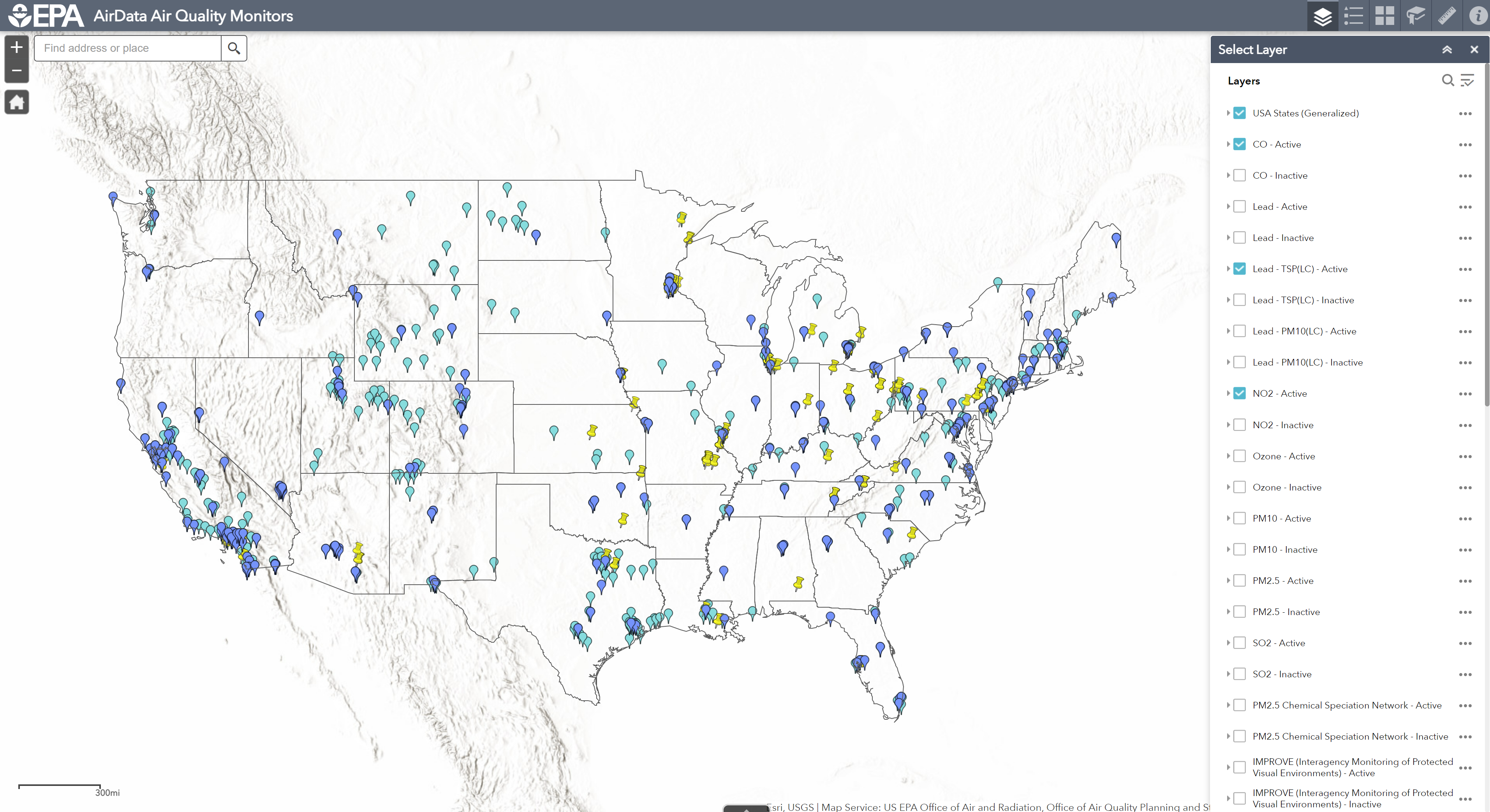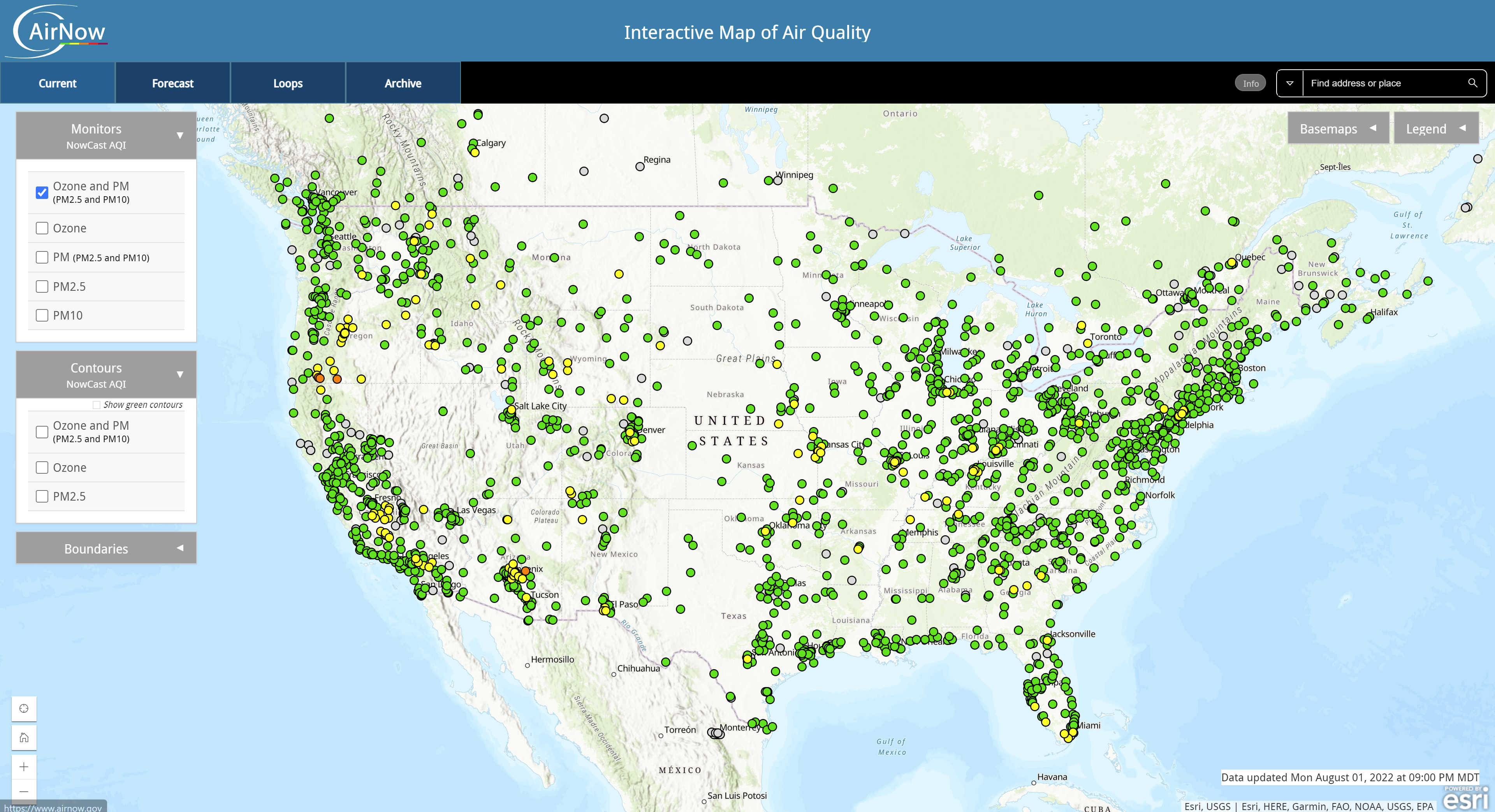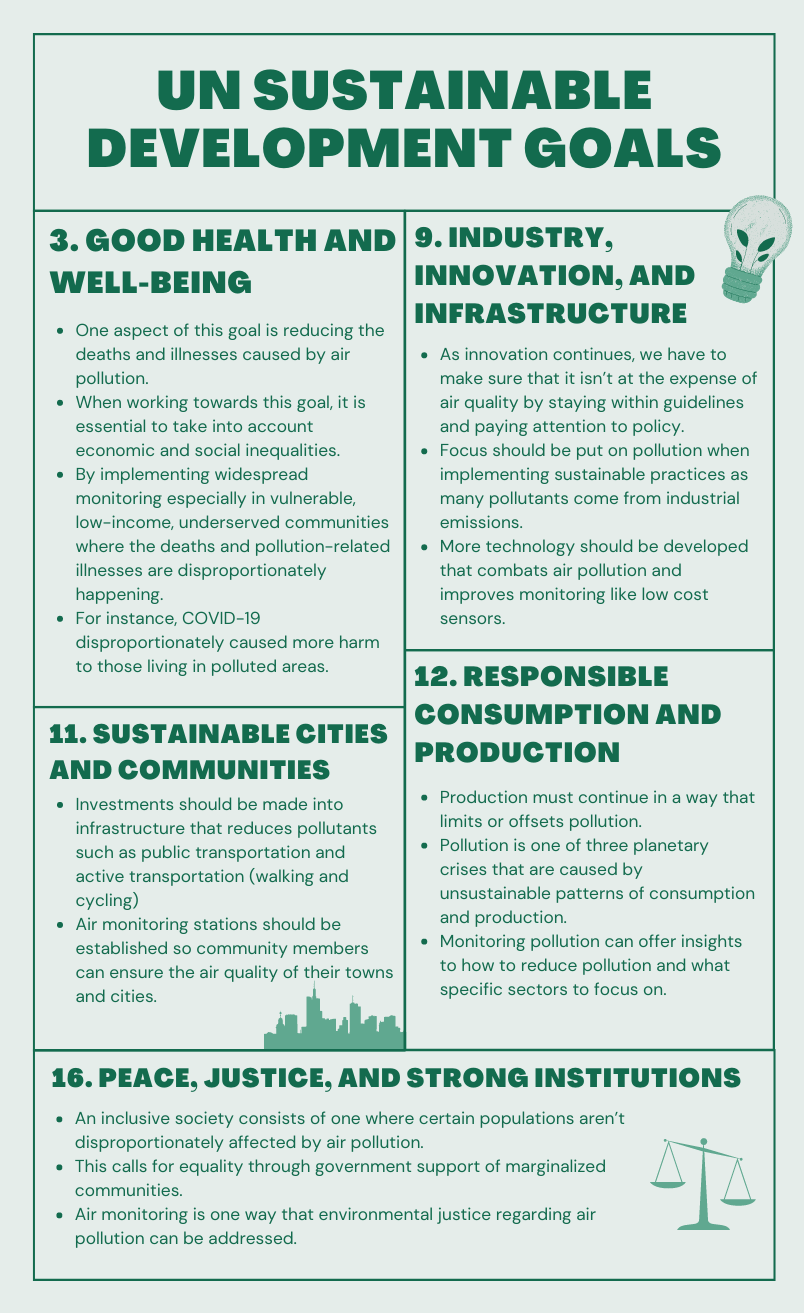Air Monitoring Today
There are a variety of ongoing air quality monitoring efforts led by the government, industry, and communities. These efforts attempt to meet regulations put in place by current policy as well as provide people with information that pertains to their health. However, there still remains a need for updated air monitoring techniques and more availability of air quality data.
Current Monitoring
In the US, there are a variety of established air monitoring systems whose data is publicly available online. This data is collected by local government agencies and provides information about pollutants like ozone, particulate matter, carbon monoxide, sulfur dioxide, and more. Oftentimes, the data is represented geospatially with maps that allow users to find locations of interest. Some websites display data from specific monitors while others show pollutant levels on the city- or town-scale. For instance, the following websites offer insights into air quality in the US:
Current Policy
Perhaps the most prominent piece of legislation regarding air quality is the Clean Air Act. Established in 1970, this law created air pollution standards and regulations in an attempt to improve the worsening issue of air quality. In particular, through the Clean Air Act, the EPA was required to establish national ambient air quality standards for six criteria pollutants:
- Particulate Matter
- Ozone
- Sulfur Dioxide
- Nitrogen Dioxide
- Carbon Monoxide
- Lead
With these common pollutants identified and standards established regarding the levels of these pollutants, under the CAA states must adopt and enforce plans to meet these standards.
Need for Monitoring
While the air quality monitoring data that is available can be informative, oftentimes this data doesn’t provide the detailed information that individuals need regarding specific locations or pollutants. Indeed, the US Government Accountability Office (GAO) conducted a study that identified a need for more information regarding local-scale, real-time air quality. In particular, the GAO noted that more data was needed to understand health risks in potential hotspots and concentration of pollutants near industrial facilities. They also described the current methods used by the EPA to collect air quality information as outdated. Currently, air quality monitoring systems are often managed by the EPA and state and local agencies. The aspects that are in need of improvement include monitoring methods, usage of low-cost sensors, and managing data. However, funding for state and local air quality management grants has decreased recently, making it difficult for improvements to be made. Accordingly, the GAO made two recommendations for the EPA. The first of these recommendations is that the EPA should create an asset management framework for the national ambient air quality monitoring system so that it might be more standardized and sustainable. The second is that the EPA should establish a modernization plan that factors in the needs of managers, researchers, and the public.
In addition to the recommendations given by the GOA, there exists a need for communities to take the lead on setting up air monitoring systems. In doing so, they can dictate where data is collected and what pollutants are monitored. As a result, these communities will have control over their air quality data and have the power to use that data in the best interest of the community members. This is especially important for low-income, underserved communities who are more vulnerable to air pollution and where industrial land-use is prominent.
The goal of this guide is to encourage communities to take control of local air monitoring and provide a starting point for identifying the specific monitoring needs of these communities.
This summer, I worked at 2B Technologies, a company based in Boulder, Colorado that develops atmospheric measurement units. In addition to creating air monitoring technology, 2B Tech has an outreach program where they help communitites set up monitoring stations using their sensors. Through working with this company, I was able to see how powerful these sensors were and understand the importance of establishing air monitoring in communities.





